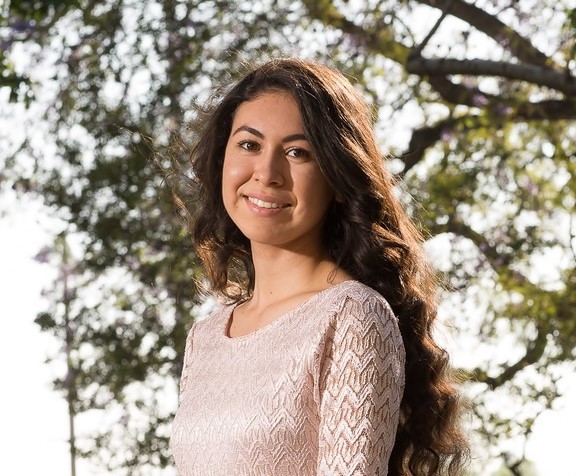

Today we’d like to introduce you to Catalina Lopez.
Throughout my childhood, I naturally had a passion for drawing and painting. The only way I found to teach myself was by borrowing art books at the library. Creating art also was a mental escape from a very hopeless outlook my family had due to our financial and living circumstances at the time. I later attended University of La Verne for a B.A. in English Literature in 2011, but I also took art studio courses in acrylic painting. I would admire the beauty of nature and water, so I focused on painting landscapes. Afterward, I attended San Jose State University for a Master of Library and Information Science in 2015 and graduated two years later. I have been using my research skills as a librarian at Chapman University to create an online environmental sustainability guide. I am also a project manager at The Claremont Colleges Library. I am working on the Bending Water Project, which plans to improve the digital accessibility of California’s water documents held in the library. My work has inspired me to learn more about the environmental issues that have a lasting effect on wildlife, forests, the ocean, and society. I have since begun to alter my landscape art to reflect on global warming, plastic pollution, and the destruction of our ecosystem.
One of the struggles I had for many years was not taking a moment to understand what my art meant to me. I used to consider my art solely as a pastime, and this mindset reflected on my older artwork. I also realized too late that I only needed a few more classes to complete the art program as a second bachelor’s. There was a time two years ago where I took the wrong advice of someone in a high level position, and I had actually quit making art and registered for another masters program in history. I ignored my intuition that this program didn’t feel right for me while also noticing that my anxiety started building up throughout this semester. I finished off the first and only class I attended, but I won’t ever forget the moment where I had a conversation with one of my classmates who wanted to see photos of art I had done. She then said to me, “Oh, Catalina, you are not a historian. You are an artist. What are you doing here in this program?” At that moment I realized that I had accepted advice from someone who assumed they knew me more than I knew myself, telling me that studying art won’t amount to anything. On the last day of that class, I left the program, went to the nearest restaurant, and started drawing. I hadn’t drawn in a year, but my talent kept flowing onto the small scratch paper I had on me. While I hope to someday return and finish the undergrad art program or possibly attend an M.F.A program, I have started acknowledging my art as a profession. Once I started taking my art seriously, I saw a change in my work and eventually developed my unique artist style. An important lesson from this experience that I hope others will learn from is this: You are your number one fan, and only you can make the decision on what your passions are. Once you have a set goal in mind, surround yourself with people who will support you along the way. If, for any reason, you are at a time in your life where nobody you know seems to understand why you chose certain paths, remember again that you have yourself. Take care of your endeavours until you can eventually come across people who can understand and support you.
Alright, so let’s switch gears a bit and talk business. What should we know about your work?
One body of artwork involves upcycling and stitching plastics and fabric onto canvas to create ocean scenery. These works of art represent the harmful effect of plastic pollution on ocean life. Until I adapt into making my own natural paints, I continue to use the acrylics I have left to paint landscapes. However, I have adjusted how I manage leftover paint by using sheets as a painting palette. Instead of disposing these sheets of paint when finished, I will combine them into a booklet to refer to later. This prevents any washing down of acrylic into the sink that would produce microplastics in the ocean. I also like to experiment with painting on glass.
So maybe we end on discussing what matters most to you and why?
I could not ignore the effects of climate change on the environment, thus introducing it in my landscapes and ocean scenery. I am also inspired by my grandmother who was a seamstress. She would design and sew her own clothing that she would sell in Olvera Street in Los Angeles. Even though she lived at my home until her passing, I never got the chance to fully learn how to sew from her since she used an industrial sewing machine that was too advanced. My memories of her inspired me to practice with stitching fabrics in my plastic and textile art as a tribute to my grandmother.
Contact Info:
- Email: [email protected]
- Website: catalinalopezart.com
- Instagram: https://www.instagram.com/catalinalopezart/























